Dove Hunting by Brenda Potts
From Midwestern sunflower fields to the chanares of Argentina, few species test your wing shooting skills like the dove. Fine table fare awaits, if you can score on these aerial acrobats. With an estimated population of more than 400 million, the mourning dove is one of the most widely distributed and abundant birds in North America. White-winged doves are similar, yet differ in their appearance, biology, behavior, and distribution. Both species are migratory with Neotropical origin. The mourning dove has a greater distribution in North America, as it breeds in 48 states and southern Canada then winters in the southern United States, Mexico, and Central America. The white-winged dove, has been limited to Central America, Mexico, and the southwestern U. S., but recently started expanding northward in Texas. Eurasian collared doves and ringed turtledoves are both non-native species that are also rapidly expanding their ranges.
Doves need food, cover, and water. Primarily seed-eating ground-feeders, doves consume a wide variety of native plant seeds as well as domestic grains. Doves roost at night in trees. They also nest both in trees and on the ground. They normally fly to water twice a day, sometimes for several miles in search of preferred food and water sources. Hawks, owls, jays, grackles, snakes, and mammals, prey on dove eggs and young birds. High winds, severe weather and human activities affect dove populations.
Dove hunting is an important economic factor. According to the Texas Dove Symposium, “Dove hunting is an important form of outdoor recreation; with an estimated 10 million days of dove hunting recreation annually in North America. Annual harvest of doves exceeds that of all other species of game birds in the United States. Texas has nearly 400,000 dove hunters who generate $200 million in revenue each fall, mostly in September. The state collects about $11 million in sales tax on items bought as a result of dove hunting. Mourning doves are widely distributed throughout North America including all of Texas.”
Dove hunts can be found in numerous locations, whether you choose to sit next to a sunflower field in the U.S. or travel to exotic locations in Central America. You can hunt doves on thousands of acres of public land or contact various outfitters for hunts to fit any need or skill level.
Argentina has earned the reputation of being one of the highest volume dove-shooting destinations in the world. In regions covered with thick bushes called chanares, doves can be found in abundance. The bushes are a favorite habitat for doves as they can nest protected from natural predators. An estimated 20 million birds roost in the area and the population keeps growing with each bi-annual reproduction.
For a dream dove hunt contact The Detail Company, Inc. of Houston, Texas and ask about Estancia Los Chanares in Argentina ([email protected]). Located 60 miles from the Cordoba International Airport, Estancia Los Chanares owns over 95 percent, or about 10,000 acres of all the farmland comprising the major dove nesting and hunting area for which the northern region of Cordoba is known. The 8,000 acres of farmland surrounding the 2,000 acres of nesting grounds have been parceled out into 18 huge hunting areas interlaced with corn and sorghum fields. They provide an overwhelming quantity and quality of wild birds, flying constantly, non-stop, all day long.
About the Author
Brenda Potts has been an outdoor writer for 15 years with articles published in a variety of magazines. She is also a book author whose credits include, Illinois Whitetails, Younger’s Wild Adventures, a series of outdoor adventure fiction for young readers, and chapters in Legendary Whitetails II. Brenda is a member of the Association of Great Lakes Outdoor Writers, the Professional Outdoor Media Association and the Western Outdoor Writers Association.
In addition to writing, she currently owns Midwest Legacy Marketing, a media liaison and consulting service in the outdoor industry. Brenda has a degree in environmental biology and 31 hours toward a master’s degree in biology.
Brenda formerly served as the Constituency Liaison for the IL Department of Natural Resources. She has been president of Illinois chapters of the Rocky Mountain Elk Foundation and Whitetails Unlimited and served as Executive Director of the IL Federation for Outdoor Resources, one of the largest non-profit conservation organizations in IL. She is also a National Bowhunter Education Foundation certified archery instructor.
Brenda shares her love of hunting and the outdoors with husband Stan who co-hosts North American Whitetail Television.
www.huntthemidwest.com



